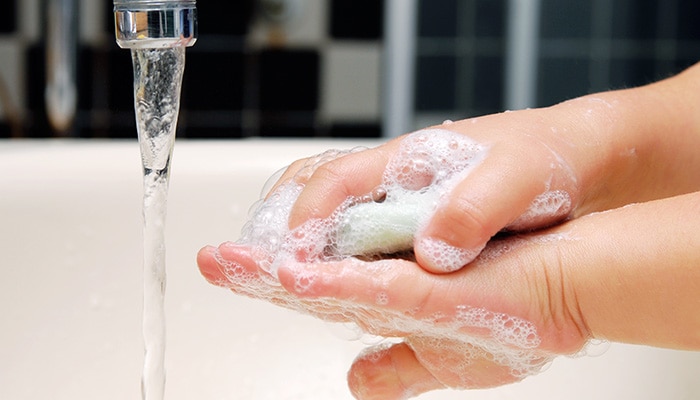While we believe that the books and resources recommended may be of value to you, keep in mind that these are suggestions only and you must do your own due diligence to determine whether the materials are appropriate and suitable for your use. PNC has no sponsorship or endorsement agreement with the authors or publishers of the materials listed.
HEALTHY ME

Keep it Clean
Children will learn how keeping their body clean is one way of staying healthy.

Lesson Objective
The children will be able to explain why, when, and how we wash our hands and bodies; and make bubble bath soap.
Science
What You'll Need
- Proximity to a sink and soap
- Wash cloth – one per child
- Red paint – 1 bottle
- Bowl
- Paintbrush – 1 per adult
- White paper – 1 per child
- Water
To make the bubble bath soap:
- Water – 1 quart
- Castile soap – 4 ounces (found in bar or liquid form at discount stores and pharmacies)
- Glycerin – 2 ounces (found at craft stores, some grocery stores, and some drugstores)
- Large microwave safe bowl
- Wooden spoon
- Small containers with lids to store the bubble bath – 1 per child
- Access to a microwave
What To Do
- Pour some of the red paint into the bowl and add a little water to thin out the consistency of the paint.
- Tell the children that the red paint represents germs we may come in contact with in our daily lives.
- Have each child hold out a hand, palm up, and paint a thin layer of the red paint onto their hand.
- Have the children clap their hands and discuss what happened when they clapped their hands.
- Explain that this is like the way germs can spread (see Did You Know).
- Have the children touch the piece of paper and discuss what happened when they touched the paper.
- Discuss information about germs and how keeping clean is a great way to stay healthy (see Did You Know).
- As the children wash the paint off of their hands, ask them to watch closely as the soap loosens the paint and the water rinses the paint away.
- Explain that the same thing happens to dirt and germs each time they wash their hands. Each time they wash their hands, they are removing dirt and germs and helping them to stay healthy and germ free.
Making the Bubble Bath Soap:
1 quart of warm water
1 bar (4 ounces) of castile soap, grated, or 4 ounces of liquid castile soap
2 ounces of glycerin
- Grate the bar of castile soap and pour it into the quart of warm water.
- Stir until the soap dissolves. If you are using liquid castile soap, you can skip Steps 1 and #3 and just mix the liquid soap into the quart of water.
- If the castile soap does not dissolve completely, place it in the microwave for 30 seconds at a time. Check and stir.
- Add the glycerin and mix well. When cool (if microwaved), pour some of the liquid into each of the individual containers and put on the lids. Shake gently so the children will be able to see the bubbles form.
Resources
Home School Resources
Home educators: use these printable lesson PDFs to teach this lesson to your home schoolers. They're available in English and Spanish.
Content Provided By
Common Core State Standards Initiative – These lessons are aligned with the Common Core State Standards ("CCSS"). The CCSS provide a consistent, clear understanding of the concepts and skills children are expected to learn and guide teachers to provide their students with opportunities to gain these important skills and foundational knowledge [1]. Visit the CCSS


